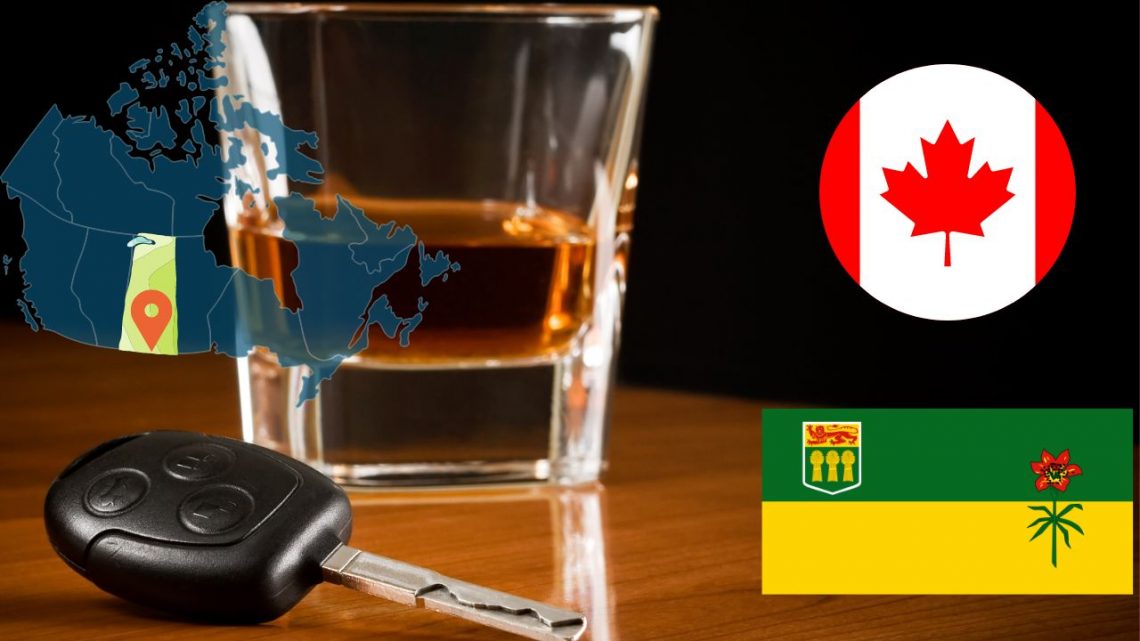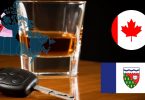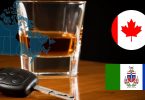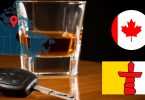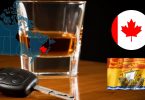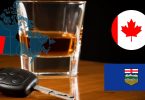In Saskatchewan, the legal blood alcohol content (BAC) threshold for drivers is set at 0.08% (80 milligrams of alcohol per 100 milliliters of blood). However, having a BAC of 0.04% (40 milligrams of alcohol per 100 milliliters) or more can still result in charges.
Please bear in mind that the main focus of this article is to educate about impaired driving in Saskatchewan. The post does not advocate for a specific amount of drinking or drinking.
We are against driving while intoxicated. Even if you drink a few drinks and your BAC is within the legal limit, it is still best to take a cab, Uber, or other designated driving service for your safety.
Also, make it a habit to check Saskatchewan’s official website for any updates on drunk driving regulations.
What is the Legal Alcohol Limit for Driving in Saskatchewan?
In Saskatchewan, driving under the influence of alcohol is regulated by specific legal limits that vary based on the driver’s age and license type. These limits are designed to enhance road safety and reduce the risks associated with impaired driving. Here’s a breakdown of the legal alcohol limits for different categories of drivers:
- Regular Drivers: The legal blood alcohol content (BAC) limit is 0.08% (80 milligrams of alcohol per 100 milliliters of blood). Exceeding this limit can lead to serious legal consequences, including fines, license suspension, and even imprisonment.
- Minor Drivers (Under 21): It is illegal for minors to operate a vehicle with any detectable amount of alcohol in their system. This zero-tolerance policy aims to protect young drivers and other road users by discouraging underage drinking and driving.
Drink and Drive Penalties and Punishments in Saskatchewan
In Saskatchewan, the consequences of impaired driving are significant and apply to all drivers, regardless of experience. The following outlines key offences and their associated penalties, underscoring the importance of adhering to legal alcohol and drug limits while driving.
Key Offences Include:
- Driving with a BAC of 0.08% or over.
- Operating a vehicle while impaired by alcohol or drugs.
- Failing or refusing to comply with a demand at roadside, including breathalyzer tests.
- Driving over the legal limit for drugs, or under the influence of both alcohol and drugs.
Consequences for These Offences:
- Immediate Roadside Suspension:
- Your license is immediately suspended at the roadside, starting from the day the Notice of Suspension is served. This suspension is indefinite, pending the resolution of charges in court.
- Vehicle Impoundment:
- The vehicle you’re driving will be impounded. The duration depends on the offence, ranging from 30 days for impaired driving or driving slightly above the legal alcohol limit, to 60 days for more severe cases like refusal to comply with a demand or high BAC levels.
- Impaired Driving Education:
- Conviction leads to mandatory enrollment in impaired driving education programs, varying from the Driving Without Impairment (DWI) program for first offenders to addiction assessments for subsequent offences.
- Mandatory Ignition Interlock:
- After serving an absolute prohibition order, installation of an ignition interlock device in your vehicle may be required for a predetermined period, depending on the offence severity and frequency.
Consequences and Costs:
- Offences carry immediate suspensions, vehicle impoundment, mandatory education programs, and significant penalties on the Safe Driver Recognition (SDR) scale, including fines ranging from $1,250 to $2,250.
Appealing a Suspension:
- Appeals can be made through the Highway Traffic Board (HTB) within 90 days of suspension. The appeal process involves purchasing a non-refundable Roadside Appeal Receipt and choosing between a written or face-to-face hearing.
For the most accurate and up-to-date information on penalties, punishments, and the appeal process for drink and drive offences in Saskatchewan, it is crucial to consult the official state website regularly. This ensures you remain informed about any changes or updates to the laws and penalties concerning impaired driving.
How to Calculate if Your Alcohol Blood Limit is Legal in Saskatchewan
In Saskatchewan, the legal blood alcohol content (BAC) limit for driving is set at 0.08%. Police use several methods to determine a driver’s BAC, including roadside breath tests and, in some cases, blood tests. These tests are designed to accurately measure the alcohol concentration in your bloodstream to ensure drivers are not exceeding the legal limit.
As a former phlebotomist with a decade of experience, I’ve seen firsthand the importance of understanding one’s BAC before deciding to drive. To help you stay within legal limits, I recommend the following two methods:
- Use a High-Quality Alcohol Breathalyzer:
- One of the most reliable devices I’ve come across is the BACtrack S80, which is readily available in Saskatchewan. This device offers professional-grade accuracy and is DOT & NHTSA approved, as well as FDA 510(k) cleared. Carrying a BACtrack S80 in your vehicle can be a practical way to assess your BAC, providing a helpful indication of whether you’re within the legal limit. Given the challenges some individuals face in estimating their BAC based on how they feel, having a breathalyzer like the BACtrack S80 can be a game-changer in preventing impaired driving.
- My BAC Calculator:
- Alongside a team of phlebotomists and web developers, I’ve created an online BAC calculator. This tool considers factors like your weight, the type and amount of alcohol consumed, and the time elapsed since drinking to estimate your BAC. While no online calculator can match the precision of direct blood or breath measurements, our tool is designed to offer a reasonable estimate that can guide your decision-making.
It’s crucial to understand that both these methods—while highly useful—cannot guarantee 100% accuracy due to the complexity of how different bodies metabolize alcohol. Variables such as your metabolic rate, recent meals, and individual health factors can influence your actual BAC. Therefore, these tools should be used as guides to assist in making safer choices rather than definitive measures.
Relying on these methods can give you a better understanding of your BAC level and potentially prevent you from driving when you might be over the legal limit. Remember, the safest approach is always not to drive if you’ve been drinking, ensuring you and others on the road remain safe.
Ways to Avoid Driving with a High BAC in Saskatchewan
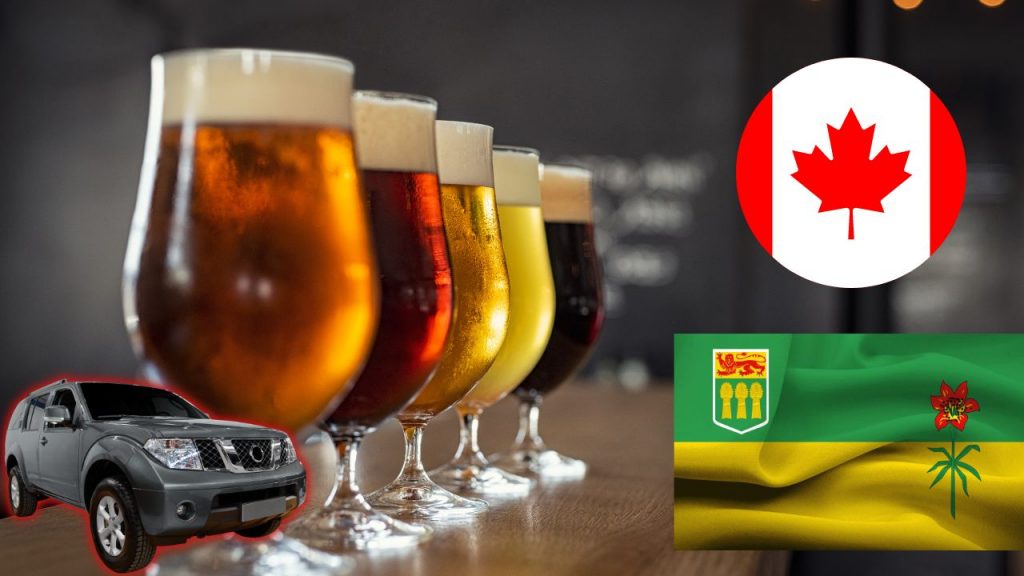
Driving with a high blood alcohol concentration (BAC) is not only illegal but also extremely dangerous. In Saskatchewan, there are several smart alternatives to ensure you get home safely without risking a DUI charge or, more importantly, your life and the lives of others. Here are practical tips to avoid driving under the influence:
- Utilize Ride-Sharing Apps and Local Taxi Services:
- Modern technology offers convenient solutions such as Uber, which are accessible via smartphone apps and provide a safe ride home at any hour. For those who prefer traditional methods, local taxi companies are reliable alternatives. In Saskatoon, Saskatoon Radio Cabs offers dependable service, while Riders Cab Regina serves those in Regina. These services eliminate the risk of driving with a high BAC by providing a professional driver to take you to your destination safely.
- Order a Designated Driver Service:
- If you find yourself in a situation where you’ve driven to a location and consumed alcohol, leaving your car behind might not be your preferred option. Fortunately, designated driver services offer a solution. These services send a driver to your location to drive you and your car home. For residents of Saskatoon, First Choice Designated Driver Service is a great option, and in Regina, you can rely on Pitbulls Designated Driver. A simple online search for “designated driver service” in your city will provide you with options to ensure you and your car get home safely without compromising on safety.
Both these strategies are effective in preventing the risks associated with driving after consuming alcohol. By planning ahead and choosing alternatives to driving yourself, you contribute to safer roads in Saskatchewan. Remember, it’s always better to spend a little on a ride home than face the severe consequences of impaired driving.
Sticking to Saskatchewan Impaired Driving Regulations: Sad Statistics
In response to over 1,100 alcohol or drug-related crashes in 2014, resulting in 61 deaths and 541 injuries, Saskatchewan tightened its impaired driving penalties in 2017. This article covers essential information on the dangers and consequences of driving under the influence in the province.
To avoid the risk of drunk driving, consider leaving your car at home and using taxis or ride-hailing services. Alternatively, arranging a ride with a friend can ensure you and others on the road remain safe.
While staying within the legal BAC limit is crucial, the safest approach is to avoid driving after drinking altogether. Using a reliable breathalyzer can help gauge your BAC, but abstaining from driving after consuming alcohol is the best way to protect yourself and others.

